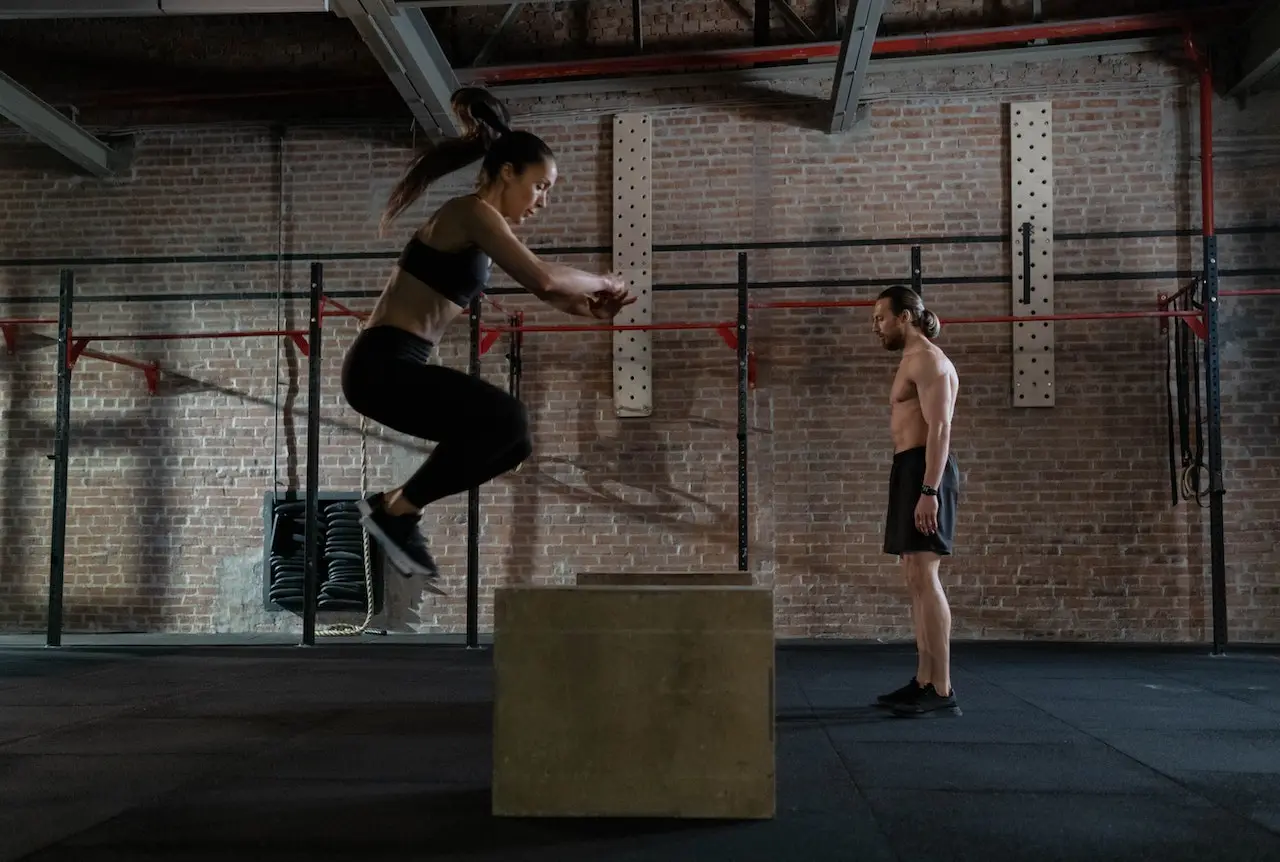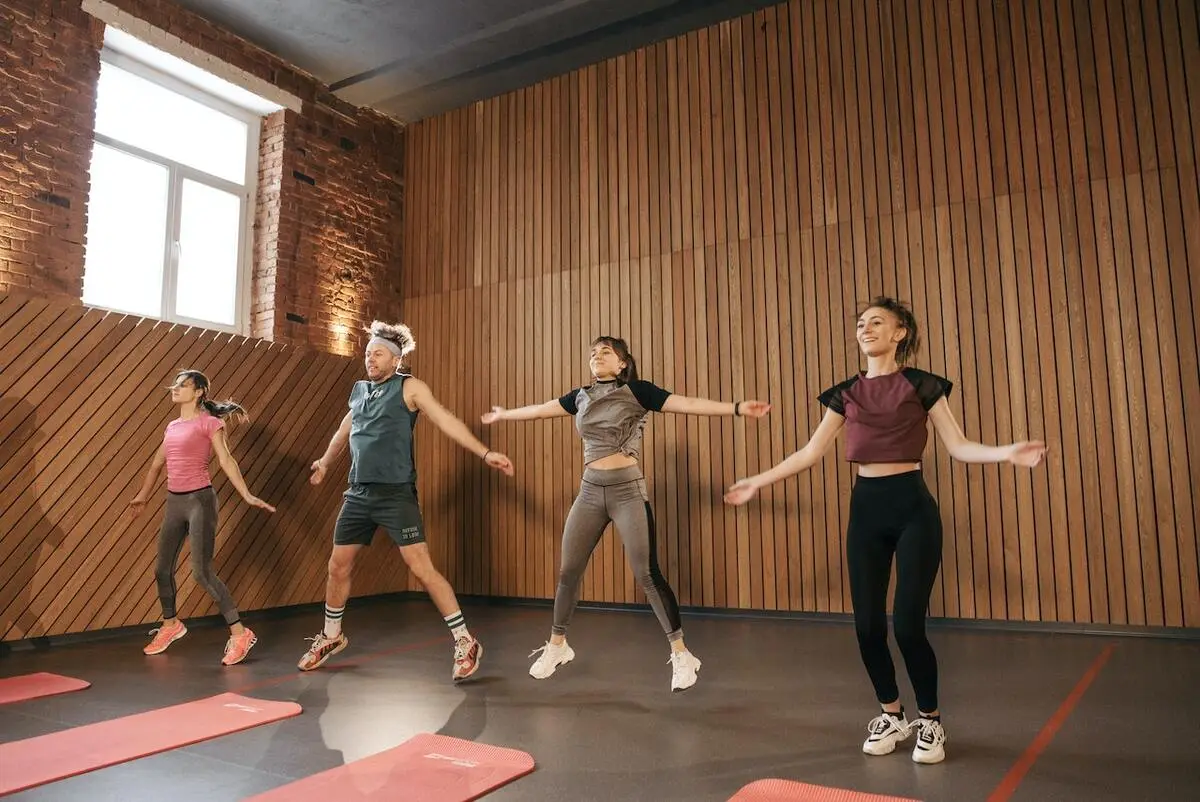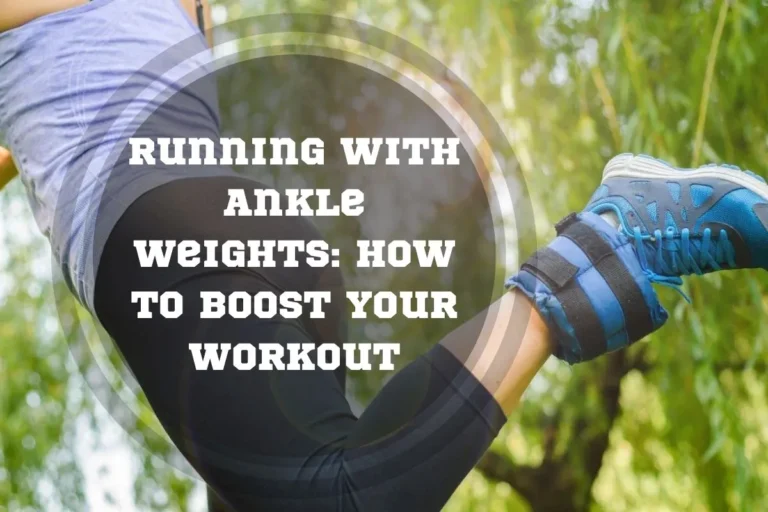Plyometrics for Runners: Details, Benefits, and Useful Tips
As a runner, you are likely always looking for ways to improve your performance and speed. One way to achieve this is by incorporating plyometric exercises into your training routine. But what exactly is plyometrics for runners?
Plyometric exercises are explosive movements that utilize your body’s natural stretch reflex to increase power and speed. In this blog post, we will explore plyometric exercises, their main benefits for running, and some exercises to boost your speed and stamina. Keep reading to find out all the details!
Why are Plyometrics for Runners so Beneficial?
If you’re a runner looking to improve your speed and power, incorporating plyometrics for runners into your training routine can be a game-changer. Plyometrics are explosive movements that help build strength and improve coordination, which can lead to better running performance.
What Are Plyometric Exercises and What Are Their Main Benefits for Running?
Plyometric exercises are a type of training that involves explosive and high-impact movements such as hopping, jumping, and bounding. These exercises are designed to improve power, speed, and agility by utilizing the body’s natural stretch reflex.
The stretch reflex is a natural response when a muscle is stretched quickly and then rapidly shortened. This reflex causes the muscle to contract with greater force than it would during a normal muscular contraction.
5 Plyometrics Benefits for Running
Below you can find 5 top plyometrics benefits that explain how they can boost your running performance.
1. Improved Running Economy
Plyometric exercises can help improve your running economy by increasing power and explosiveness. This means that you can cover more ground with each stride, resulting in a more efficient running stride. This improved running economy can help you run faster and longer with less effort.
2. Increased Speed and Power
Plyometric exercises are designed to increase speed and power through explosive movements. Incorporating plyometric exercises into your training routine can improve your ability to generate force and accelerate quickly. This can help you improve your sprint speed and overall running speed.
3. Better Running Form
Better running form can help you avoid injury and improve your overall running efficiency. Plyometric exercises can help improve your running form by strengthening your legs, core, and hips. Developing these key muscle groups can improve your posture, balance, and coordination while running.
4. Enhanced Endurance
Plyometric exercises can also help improve your endurance by increasing your fitness level. This can help you run longer and with less fatigue. By incorporating high-intensity plyometric exercises into your training routine, you can improve your cardiovascular endurance and increase your lactate threshold.
5. Reduced Risk of Injury
Finally, plyometric exercises can help reduce your risk of injury by strengthening the muscles and joints most commonly injured while running. By strengthening these key areas, you can improve overall stability and reduce your risk of developing common running injuries such as shin splints, IT band syndrome, and plantar fasciitis.
Do You Need Any Equipment to Do Plyometrics?
If you want to try plyometric exercises, you may wonder what equipment you need. As it turns out, you don’t actually need any!
No Equipment Required
The good news is that you don’t necessarily need any equipment to do plyometrics. Many plyometric exercises rely solely on your body weight. For example, squat jumps, tuck jumps, and burpees are all effective plyometric exercises that require no equipment. Additionally, exercises such as high knees and butt kicks can improve your plyometric ability without any equipment.
Minimal Equipment
While no equipment is required for a general plyometric workout for runners, some exercises can benefit from using minimal equipment. For instance, a jump rope is a great tool for plyometrics. Jumping rope can help improve your footwork and coordination, both of which are essential for plyometric exercises. Another useful piece of equipment is a plyometric box, which can be used for box jumps, step-ups, and lateral jumps.

Specialized Equipment
While not necessary, some specialized equipment can help take your plyometric training to the next level. For example, weighted vests or ankle weights can add resistance to your exercises, making them more challenging. Additionally, resistance bands can add resistance to exercises like jump squats and lateral shuffles.
With proper training and equipment, plyometrics can be an effective way to improve your athletic performance. You do not need any equipment to do basic plyometrics, but some minimal and specialized equipment can enhance your training. Before investing in any equipment, ensure you have a solid foundation of bodyweight exercises. Remember to always prioritize safety and proper form when performing plyometric exercises.
3 Best Plyometric Exercises for Runners: Beginner, Intermediate, Advanced
Choosing the right plyometric exercises based on your fitness level is important. Let’s discuss the best plyometric exercises for runners based on whether they are beginner, intermediate, or advanced.
Beginner
If you are new to plyometric exercises, it is important to start with basic exercises to avoid injury. The following exercises are ideal for beginners:
1. Squat Jumps
Stand with the feet shoulder-width apart and squat down until the thighs are parallel to the ground. From this position, jump as high as possible, then land back in the squat position. Repeat for 10-12 reps.

2. Jumping Jacks
Jumping jacks are a classic plyometric exercise that helps improve cardiovascular endurance and coordination. Stand with your feet together and arms at your sides. Jump up and spread your legs while raising your arms above your head. Land back in the starting position and repeat for 30-60 seconds.
3. Lateral Bound
Stand with your feet shoulder-width apart and jump sideways as far as possible while landing on one foot. Hold for a second before jumping back to the starting position and repeating on the other side. Repeat for 10 reps on each side.
Subscribe to Our Running Newsletter!
Get free running tips from renowned professional athletes and discounts from top-notch brands.
Intermediate
Once you have mastered the basic exercises, you can move on to more challenging exercises. The following exercises are perfect for intermediate runners:
1. Box Jumps
Stand in front of a box or bench that is knee-high. Jump onto the box and land softly on the balls of your feet. Step back down and repeat for 10 reps.
2. Skater Jumps
This exercise helps to improve lateral movement and balance. Start by standing on one foot and jumping sideways as far as possible while swinging your other leg behind you. Land on the other foot and repeat for 10 reps on each side.
3. Burpees
Burpees are a full-body exercise that helps improve cardiovascular endurance, strength, and explosiveness. Start in a standing position, drop into a squat position, place your hands on the ground and kick your feet back, perform a push-up, jump back to the squat position, and jump as high as possible. Repeat for 10-12 reps.
Advanced
Advanced runners can perform more challenging plyometric exercises to improve their explosive power and speed. The following exercises are best for advanced runners:
1. Depth Jumps
Stand on top of a box or bench at least 18 inches high. Jump off the box, land on both feet and immediately jump as high as possible. Repeat for 5-6 reps.
2. Tuck Jumps
Tuck jumps help improve explosive power in the legs and core. Start by jumping as high as possible and tucking your knees to your chest. Land softly and repeat for 10-12 reps.
3. Power Skipping
Power skipping helps improve coordination, speed, and explosive power. Start skipping as high as possible while driving your knees up to your chest. Land softly and repeat for 30-60 seconds.
Always warm up before performing plyometric exercises, and consult with a trainer or physician if you have any concerns.
Plyometrics for Distance Runners
Plyometric exercises can help distance runners improve their power and speed, leading to faster race times. By incorporating plyometrics into their training regimen, runners can improve their stride length and reduce ground contact time, resulting in a more efficient running form. Additionally, plyometrics can help strengthen the muscles in the legs and core, reducing the risk of injury.
The number of plyometric exercises a distance runner should do will depend on their training goals and the distance they are training for. For example, marathon runners may focus more on endurance training and only incorporate a few plyometric exercises into their routine. At the same time, a sprinter might do more explosive plyometric exercises for speed.
Generally, distance runners should focus on exercises that strengthen the muscles used in running, such as the calves, quadriceps, hamstrings, and glutes. Some plyometric exercises that are beneficial for distance runners include:
- Box jumps
- Jumping lunges
- Bounds
- Skater jumps
- Single-leg hops
It is best to start with a few basic exercises and gradually increase the intensity and volume as you become more comfortable with the movements. Additionally, you should always warm up before doing plyometrics and give your muscles time to recover between workouts.
When Should I Do My Plyometric Workout?
Many runners are unsure when to do their plyometric workout. Are they better before or after running? There is no one-size-fits-all answer to this question. Some runners may benefit from doing plyometrics before running, while others may benefit from doing it after running, or even on alternating days. Ultimately, the best approach depends on the runner’s goals, preferences, and physical abilities.
Before Running
Some runners prefer to do their plyometric workouts before running. The main benefit of doing plyometrics before running is that it can help activate the nervous system and muscles, leading to better performance during the run. Additionally, doing plyometrics before running can help warm up the body and prevent injuries during the run. However, it is important to note that doing plyometrics before running can be fatiguing and may cause the runner to not have enough energy for the run, especially if the workout is intense.
After Running
Other runners prefer to do their plyometric workouts after running. The main benefit of doing plyometrics after running is that it can help the runner cool down and recover from the run. Additionally, doing plyometrics after running can help you improve your strength and power while already fatigued, which can translate to better performance during the next run. However, it is important to note that doing plyometrics after running may not activate the nervous system and muscles as effectively as before running.
Alternating Days
Finally, some runners choose to do their plyometric workouts on alternating days from their running workouts. This can help prevent fatigue and injury from doing both workouts on the same day. Additionally, doing plyometrics on rest days can help improve overall strength and power while allowing the body to recover from the previous day’s run. However, it is important to note that this approach may not improve running performance as much as doing plyometrics on the same day as running.
Frequently Asked Questions about Plyometrics for Runners
How Many Times a Week Should Runners Do Plyometrics?
A good starting point is to do plyometrics twice a week, with at least 48 hours of rest in between sessions. As you get stronger and more comfortable with the exercises, you can gradually increase the frequency and intensity of your plyometric workouts.
Does Plyometrics Help You Run Faster?
Plyometrics involves explosive and rapid movements and is often used to improve running performance. Such training can help improve running speed, power, and agility. You can increase your muscle power and explosiveness, translating into faster running times.
Final Thoughts on Plyometrics for Runners
In conclusion, plyometric exercises are a powerful tool for runners looking to improve their performance and reduce their risk of injury. Incorporating plyometric exercises into your training routine can improve your running economy, increase your speed and power, enhance your running form, boost your endurance, and reduce your risk of injury.
Why not try plyometric exercises and see how they help you take your running to the next level?
Have you already tried adding plyometrics to your running workouts? Please share your experience in the comments below.
Also read:
- Sub 20 5K Training Plan
- Running 4 Miles A Day
- How to Put Kt Tape on Knee
- Running 50 Miles A Week
- Why Do My Ears Hurt After Running
- Does Running Make You Taller
- Running on Grass vs Concrete
- 100 Mile Training Plan
References:
- CURRENT CONCEPTS OF PLYOMETRIC EXERCISE // PMC: https://www.ncbi.nlm.nih.gov/pmc/articles/PMC4637913/
- Effect of 8 weeks of concurrent plyometric and running training on spatiotemporal and physiological variables of novice runners // PubMed: https://pubmed.ncbi.nlm.nih.gov/29227735/
- Effects of plyometric training on endurance and explosive strength performance in competitive middle- and long-distance runners // PubMed: https://pubmed.ncbi.nlm.nih.gov/23838975/
- Short-term plyometric training improves running economy in highly trained middle and long distance runners // PubMed: https://pubmed.ncbi.nlm.nih.gov/17149987/
- The effect of plyometric training on distance running performance // PubMed: https://pubmed.ncbi.nlm.nih.gov/12627298/
- Effects of plyometric training on different 8-week training intensity distributions in well-trained endurance runners // PubMed: https://pubmed.ncbi.nlm.nih.gov/36326594/
- A Plyometric Warm-Up Protocol Improves Running Economy in Recreational Endurance Athletes // PMC: https://www.ncbi.nlm.nih.gov/pmc/articles/PMC7080849/
If you have any questions or suggestions, you can contact us via email – [email protected]







In general, I think this article is useful. For me as a beginner, it’s important not only to read general information, but also to get some examples of exercises, and here it is.